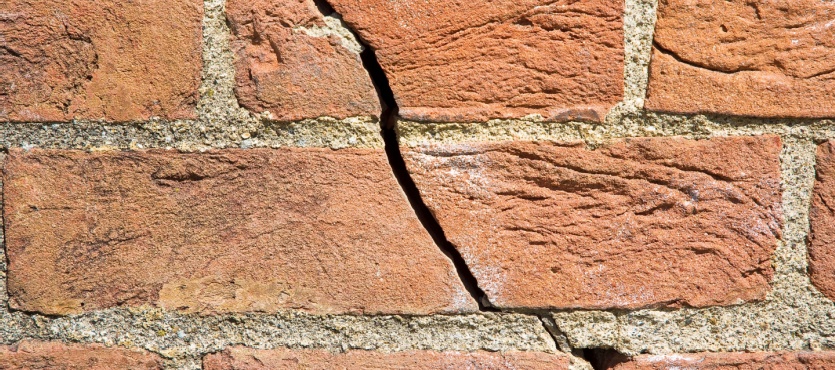Brickwork is known for its durability and timeless appeal, making it a popular choice for both residential and commercial buildings. However, like any building material, brickwork is not immune to the effects of time and environmental stressors. Recognizing the early signs of deterioration in your brickwork is crucial to preventing more serious and costly damage down the line. Let’s explore the common signs of brickwork deterioration and when it’s time to call in a professional for repairs.
Common Signs of Brickwork Deterioration
Cracks in the Bricks or Mortar: Cracks are one of the most visible signs that your brickwork may be deteriorating. They can appear in both the bricks themselves and the mortar joints between them. While small, hairline cracks may not seem like a big deal, they can quickly worsen if left untreated. Cracks allow water to penetrate the brickwork, which can lead to further damage, especially in freezing and thawing cycles where water expands inside the cracks. Larger cracks or those that appear suddenly can indicate structural issues that need immediate attention.
Spalling: Spalling occurs when the surface of the brick begins to flake or crumble. This typically happens when water infiltrates the brick, freezes, and then expands, causing the surface to break away. Spalling not only affects the appearance of the brick but also compromises its structural integrity. If you notice bricks that are chipping or have a rough, crumbling surface, it’s a clear sign that your brickwork is deteriorating.
Bulging or Bowing Walls: Bulging or bowing brick walls are a more serious sign of deterioration. This occurs when the brickwork begins to push outward, usually as a result of water damage or structural issues within the wall. Bulging can also occur if the brickwork was not properly installed or if the foundation shifts. This issue is particularly concerning because it can indicate a risk of wall collapse. If you notice any part of your brick wall bulging or bowing, it’s essential to call a professional immediately.
Efflorescence: Efflorescence appears as a white, powdery residue on the surface of your bricks. This substance is caused by water-soluble salts within the bricks being drawn to the surface by moisture. While efflorescence itself isn’t harmful, it is a sign that your brickwork is absorbing moisture, which can lead to more severe problems over time. Addressing the underlying moisture issue is key to preventing further deterioration.
Mortar Deterioration: The mortar that holds your bricks together is just as important as the bricks themselves. Over time, mortar can deteriorate, crack, or even start to crumble. Deteriorating mortar weakens the overall structure of the wall and can lead to bricks becoming loose or dislodged. If you notice that your mortar is eroding or falling out, it’s a clear sign that your brickwork needs professional attention.
Stains and Discoloration: Stains and discoloration on your brickwork can be more than just an aesthetic issue. They often indicate underlying problems, such as water damage, mold growth, or the presence of efflorescence. Dark or greenish stains may suggest that water is seeping into the brickwork, leading to potential mold or mildew growth. Addressing these stains early can prevent more significant damage and maintain the appearance of your brickwork.
Gaps Between Bricks: Over time, you might notice gaps forming between your bricks. This can happen as the mortar deteriorates or as the structure of the building settles. These gaps can allow moisture to seep in, leading to further deterioration of the brickwork. Gaps also reduce the structural integrity of the wall, making it more susceptible to damage from environmental factors.
When to Call a Professional
While some minor brickwork issues can be addressed with basic maintenance, many signs of deterioration require the expertise of a professional mason. Here’s when you should consider calling in a pro:
- Widespread Cracking: If you notice extensive cracking in your brickwork or cracks that seem to be growing, it’s time to call a professional. These cracks can indicate underlying structural issues that need to be addressed immediately.
- Bulging Walls: Bulging or bowing walls are a serious concern and should be evaluated by a professional as soon as possible. This type of damage can compromise the safety of your building.
- Spalling or Crumbling Bricks: If you see bricks that are crumbling or spalling, it’s best to get a professional assessment. Spalling bricks can lead to more extensive damage if not repaired promptly.
- Efflorescence: While efflorescence is not inherently damaging, it’s a sign of moisture issues that need to be addressed. A professional can help identify the source of moisture and recommend appropriate solutions.
- Deteriorating Mortar: When the mortar between your bricks starts to erode or crack, it’s time to consider professional tuckpointing or repointing services to restore the integrity of your wall.
- Visible Gaps: Gaps between bricks or between bricks and mortar should be filled by a professional to prevent moisture infiltration and maintain the stability of the structure.
Protecting Your Brickwork
Brickwork is a durable and long-lasting building material, but it still requires regular maintenance and care. By keeping an eye out for signs of deterioration and addressing issues promptly, you can extend the life of your brickwork and maintain the structural integrity of your home or building.
If you notice any of the signs mentioned above or are concerned about the condition of your brickwork, it’s wise to seek professional advice. Turnbull Masonry offers expert brickwork assessment and repair services to help protect your property and ensure its longevity. Their experienced team can identify problems early and provide effective solutions to keep your brickwork in top condition.

